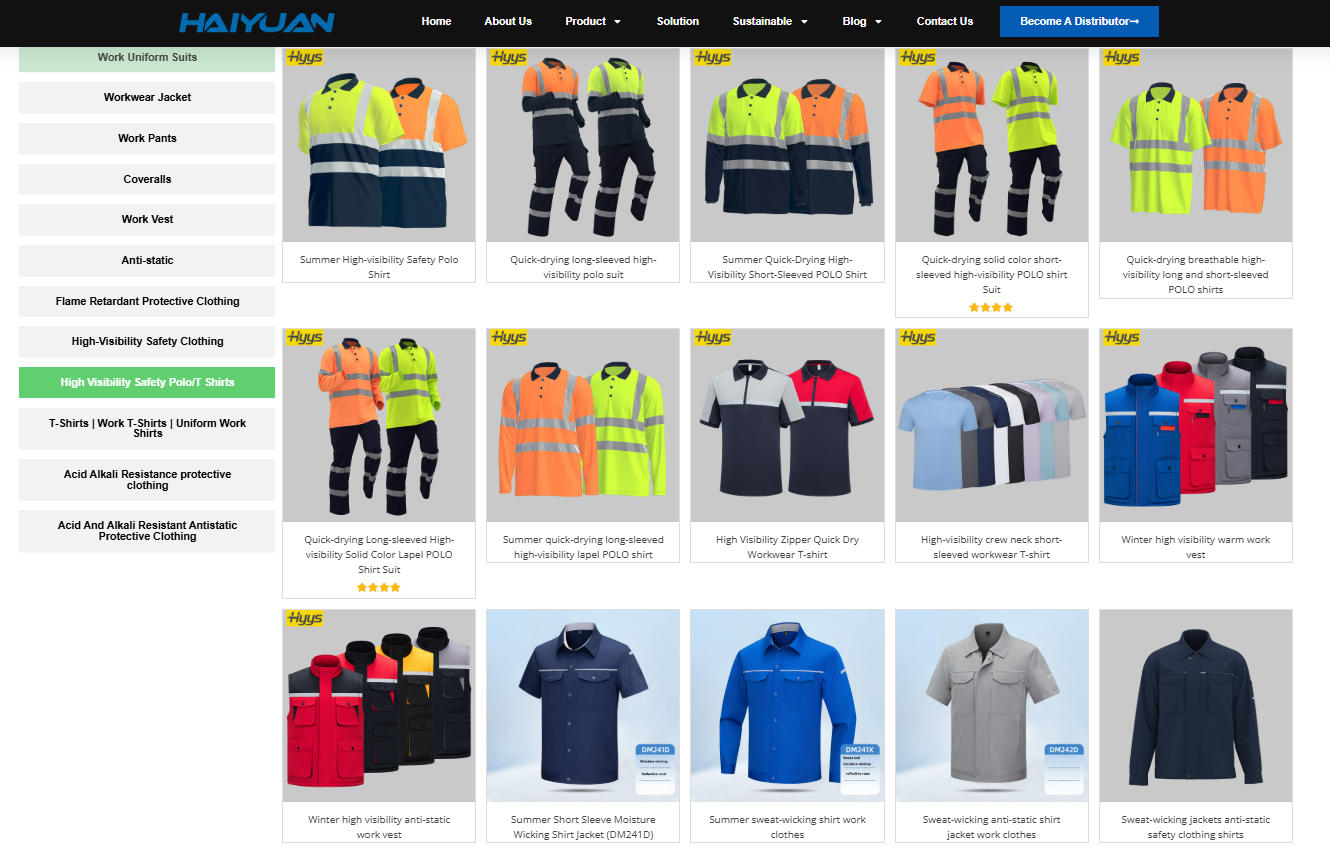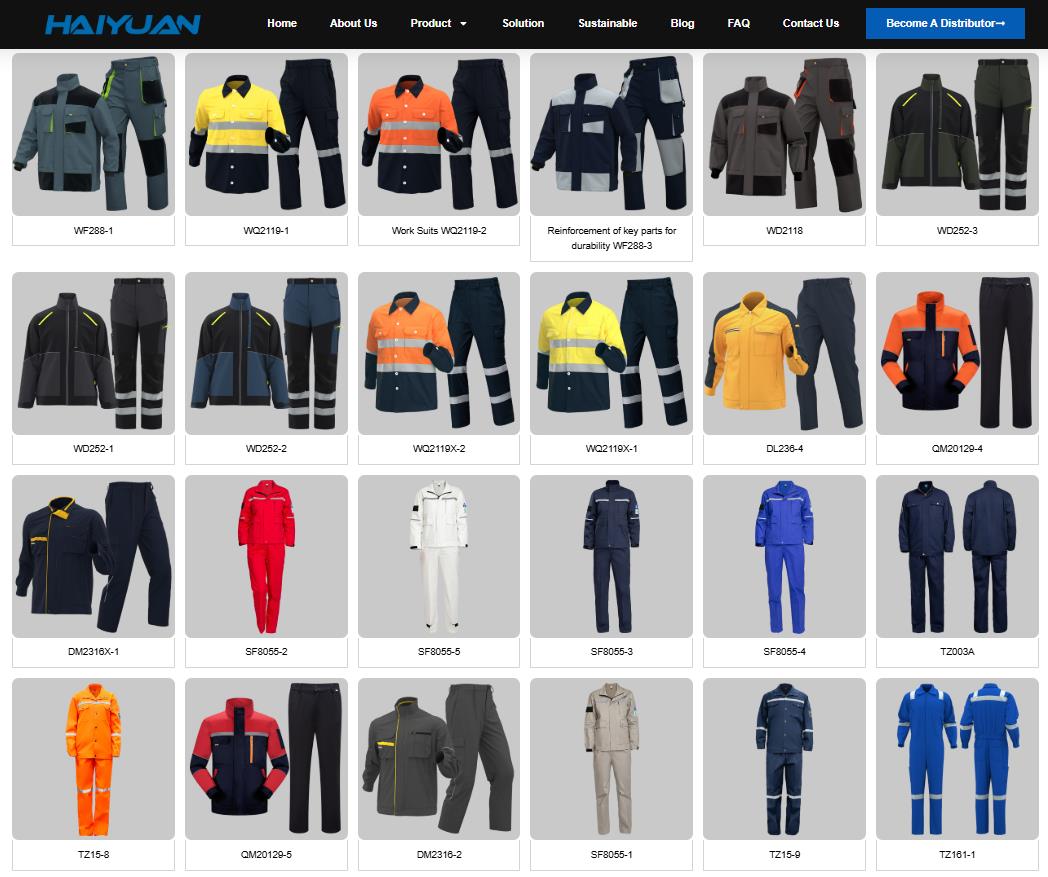Importing custom work uniforms from China can be a highly strategic move for Pakistani businesses. It offers a powerful combination of cost-effectiveness, a wide range of fabric and style options, and advanced manufacturing capabilities. However, a successful import operation requires careful planning and execution to avoid common pitfalls.
This guide will walk you through the entire process, from initial planning to final delivery.
Phase 1: Pre-Sourcing Preparation & Planning
Before you even start looking for suppliers, you must have a crystal-clear plan. This is the most critical phase for ensuring success.
1. Define Your Requirements Precisely:
-
Garment Type: Are these shirts, trousers, coveralls, polo shirts, jackets, or a full set?
-
Design & Style: Create detailed tech packs. Include sketches, measurements (in CM/INCHES), and design details (collar type, pocket style, plackets, etc.).
-
Fabric: Be specific. Instead of “polyester,” specify “65% Polyester / 35% Cotton, 220GSM Poplin.” Research common uniform fabrics like TC (Terylene Cotton), CVC (Chief Value Cotton), pure cotton, or flame-retardant blends.
-
Logos & Branding: Decide on the embroidery (thread type, stitch density), printing (screen print, heat transfer, DTG), or patches. Provide high-resolution vector files (AI, EPS) for your logo to ensure clean reproduction.
-
Sizing: Provide a detailed size chart. Consider if you need Asian standard sizes or specific measurements. It’s wise to order a set of sample sizes for fitting models in Pakistan.
-
Quantities: Have a realistic estimate. MOQs (Minimum Order Quantities) in China can range from 50-300 pieces per design/color, but this is negotiable.
2. Set Your Budget:
-
Calculate your total landed cost per unit. This is not just the unit price. It includes:
-
Product cost
-
Tooling costs (e.g., embroidery mold fees)
-
Sample cost
-
Shipping & Logistics cost (air or sea freight)
-
Import Duties and Taxes in Pakistan (Consult a customs clearing agent for accurate rates for uniforms)
-
Insurance
-
Bank charges for international transfer
-
3. Understand Pakistani Import Regulations:
-
Importer Registration: Ensure your business is registered with the relevant authorities (e.g., Chamber of Commerce, FBR).
-
NTN and STRCN: You will need your National Tax Number and Sales Tax Registration Number.
-
HS Code: The Harmonized System code for work uniforms is typically 6205.20.00 or 6211.32.90. Confirm this with your freight forwarder or agent, as it determines the import duty rate.
-
Required Documents: Your supplier should provide:
-
Commercial Invoice
-
Packing List
-
Certificate of Origin (usually Form E for preferential rates under the Pakistan-China Free Trade Agreement)
-
Bill of Lading (Air Waybill for air freight)
-
-
Customs Clearance Agent: Hiring a reliable agent in Karachi, Lahore, or Islamabad is highly recommended. They will handle the complex clearance process on your behalf.
Phase 2: Finding & Vetting Reliable Suppliers in China
1. Where to Look:
-
B2B Platforms: Alibaba.com and Made-in-China.com are the most popular. Look for suppliers with “Gold Supplier,” “Trade Assurance,” or “Assessed Supplier” status and high transaction levels.
-
Sourcing Agents: A good agent based in China (e.g., in Guangzhou or Yiwu) can be invaluable. They can find factories, negotiate prices, conduct quality inspections, and handle logistics for a fee (usually 5-10% of the order value).
-
Trade Shows: The Canton Fair is the largest. Visiting in person allows you to meet suppliers, feel fabric quality, and build relationships.
2. How to Vet Suppliers:
-
Communication: Gauge their responsiveness and English proficiency. Clear communication is non-negotiable.
-
Request Company Information: Ask for their business license and factory address.
-
Check Reviews and History: On B2B platforms, check their transaction history and customer reviews.
-
Ask for a Portfolio: A reputable uniform manufacturer will have a portfolio of past work, especially for custom logos.
-
Get Multiple Quotations: Contact 3-5 shortlisted suppliers. Provide them all with the exact same detailed specifications to compare quotes fairly.
Phase 3: The Ordering Process & Quality Control
1. The Sample is King:
-
Prototype Sample: Before mass production, pay for a prototype sample made to your exact specifications. This is your chance to check the fit, fabric quality, logo placement, and stitching.
-
Pre-Production Sample: Once you approve the prototype, the factory will make a final sample from the actual production fabric. Approve this sample and keep it as your “reference sample” for quality control.
2. Negotiate & Finalize Terms:
-
Price: Negotiate based on your volume.
-
Payment Terms: Never pay 100% upfront! Common and secure terms for new relationships:
-
30% T/T advance, 70% against copy of Bill of Lading.
-
Use Alibaba Trade Assurance for payment protection.
-
For large orders, consider a Letter of Credit (L/C), though it’s more complex.
-
-
Contract (Proforma Invoice): Ensure the Proforma Invoice (PI) details everything: prices, quantities, payment terms, Incoterms (e.g., FOB Shanghai, CIF Karachi), and delivery timeline.
3. Quality Control (QC):
-
During Production: You or your sourcing agent can conduct a DPI (During Production Inspection) to check the first batch off the line.
-
Pre-Shipment Inspection (PSI): This is the most crucial QC step. A QC inspector checks a random sample of the finished goods (e.g., according to AQL standards) against your approved sample for defects in workmanship, sizing, color, and labeling.
-
Do not skip this step. The cost of an inspection is far less than the cost of receiving a faulty shipment.
Phase 4: Logistics & Importing to Pakistan
1. Shipping Terms:
-
FOB (Free On Board): You pay the cost to get the goods loaded on the ship/plane at the Chinese port. You appoint your own freight forwarder to handle the sea/air freight and customs clearance in Pakistan. This often gives you more control and can be cheaper.
-
CIF (Cost, Insurance, Freight): The supplier organizes and pays for the shipping and insurance to a port in Pakistan (e.g., Karachi Port). You handle the customs clearance and transport from the port onwards. This is simpler but less flexible.
2. Choose a Freight Forwarder:
-
Work with an experienced forwarder who has a strong network in both China and Pakistan. They will handle:
-
Booking cargo space.
-
Customs documentation.
-
Port handling.
-
Arranging land transportation to your warehouse in Pakistan.
-
3. Customs Clearance in Pakistan:
-
Your customs agent will submit the required documents (Commercial Invoice, Packing List, Bill of Lading, Certificate of Origin, etc.) to Pakistani customs.
-
Pay the applicable import duties and taxes (e.g., customs duty, sales tax, income tax).
-
Once cleared, the goods will be released from the port and can be transported to your facility.

Key Advantages & Challenges for Pakistani Importers
| Advantages | Challenges & Mitigation Strategies |
|---|---|
| Cost-Effectiveness: Lower production costs compared to local manufacturing for certain qualities and volumes. | Quality Risk: Mitigate with detailed specs, samples, and pre-shipment inspections. |
| Wide Variety: Access to countless fabrics, styles, and accessories. | Communication & Language Barrier: Use clear, simple English and diagrams. Consider a sourcing agent. |
| Scalability: Factories can handle both small MOQs and very large orders efficiently. | Logistics Complexity: Partner with a reliable freight forwarder and customs agent in Pakistan. |
| Advanced Techniques: Expertise in digital printing, complex embroidery, and technical fabrics. | Lead Time: Production + shipping can take 30-60 days. Plan your inventory accordingly. |
| FTA Benefits: The Pakistan-China Free Trade Agreement (FTA) can offer reduced or zero customs duty on many products if the correct Certificate of Origin (Form E) is provided. | Hidden Costs: Budget carefully for all landed costs (duties, taxes, logistics, etc.) to avoid surprises. |
Conclusion: Your Smart Sourcing Checklist
-
Plan: Created detailed tech packs and budget with landed costs.
-
Research: Shortlisted 3-5 vetted suppliers on Alibaba/Made-in-China.
-
Sample: Ordered and approved a prototype sample.
-
Contract: Signed PI with clear terms (price, payment, Incoterms).
-
Quality: Booked a pre-shipment inspection (PSI).
-
Logistics: Hired a freight forwarder and customs clearing agent in Pakistan.
-
Payment: Used secure terms (e.g., 30/70 T/T with Trade Assurance).
-
Documentation: Confirmed all import docs (especially Certificate of Origin Form E).
By following this structured approach, Pakistani companies can successfully navigate the complexities of importing high-quality, custom-branded work uniforms from China, gaining a significant competitive advantage through professional branding and controlled costs.
Useful links:




